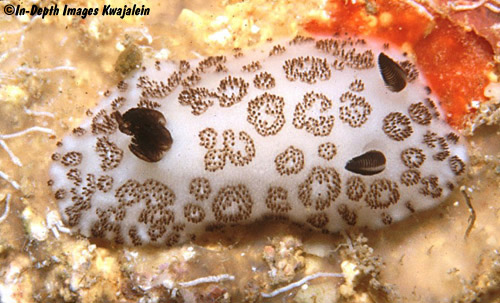
We have seen at least 25 Jorunna funebris at Enewetak and Kwajalein Atolls, and a couple more were found by John and Lynette Flynn at Rongelap. Most were under dead coral or aluminum siding storm debris on lagoon reefs and pinnacles. Some were found at night in seaward or pinnacle reef caves, and one was collected from a lagoon slope Halimeda algae patch. Depths of specimens observed ranged from 2 to 65 meters, and six measured specimens ranged from 8 to 27mm in length. An egg mass was deposited by the 27mm specimen. The egg mass was white in color, with the ribbon laid on its narrow edge in three loose whorls. Ova measured 170µm in capsules about 240µm in diameter. There were about 21,900 eggs in the entire mass. The eggs hatched in five days as free swimming veligers with type 1 shells, which were clear with purple stained columellae. Jorunna funebris was first reported in the Marshalls from Enewetak and Kwajalein Atolls by Johnson & Boucher (1984).

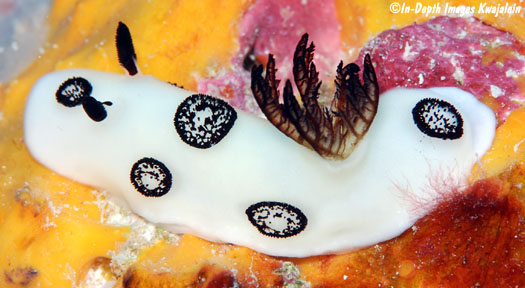
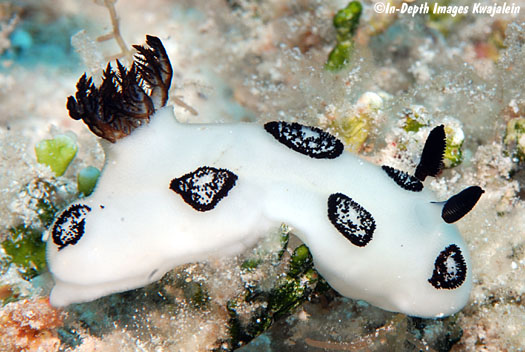
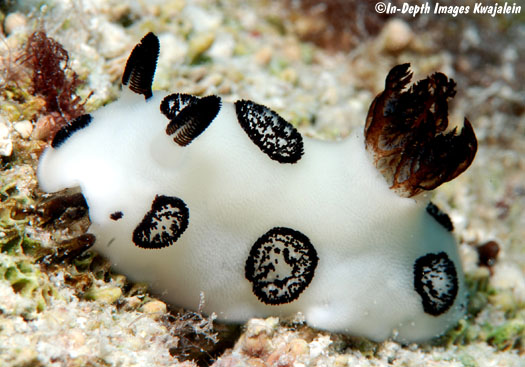
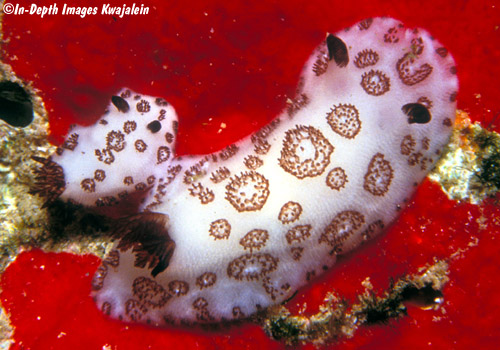
This species is sometimes found eating the blue sponge shown below. That is a tiny juvenile nudibranch, measuring probably 5mm or less.
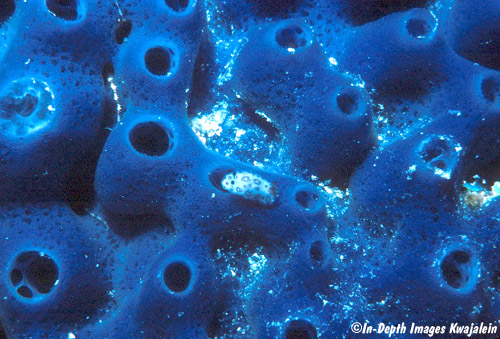
Here is another individual about 5mm long.
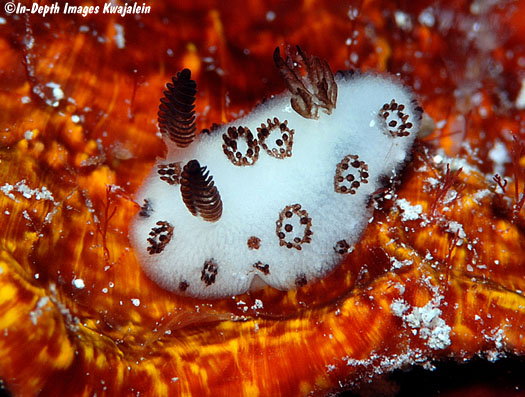
The shot below shows even smaller specimens found on 26 October 2008. The larger one near the top of the blue sponge colony was not measured, but it was probably only about 3-4mm long and was barely recognizable as a nudibranch even with magnification lenses fitted into a facemask. The even smaller specimen at the lower edge of the sponge was not even seen at the time the photo was taken, but was detected only when a computer was used to zoom in on the image. It couldn't have been even one millimeter long.
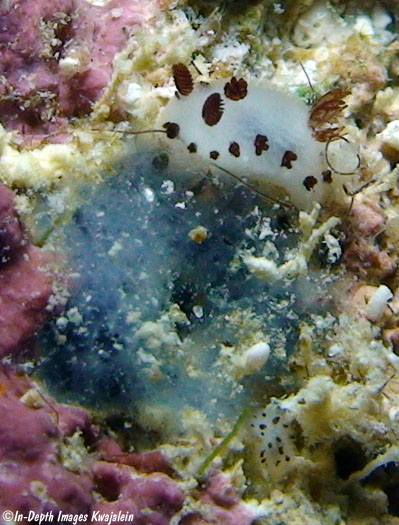
The poor beast below is missing a rhinophore, and we caught a small gymnodorid in the act of eating it off. The Jorunna was observed with an odd look to its left rhinophore, as though it was covered with a light tan mucus of some sort. The "mucus" was scraped lightly to remove it, and it indeed came off and start crawling around on the diver's hand. It turned out to be what we have been calling Gymnodoris sp. e510. While we did not get a photo of the gymnodorid on the Jorunna, a closeup of the gymnodorid shows the black Jorunna rhinophore as a large dark object in its gut.
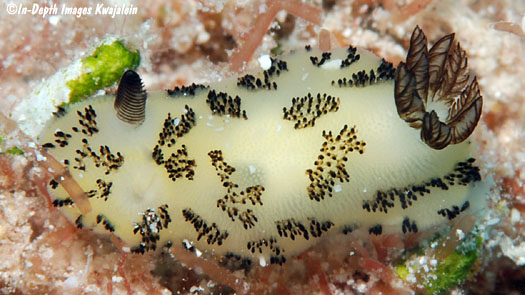
The individual below was under a rock on a shallow lagoon reef on 24 February 2014.
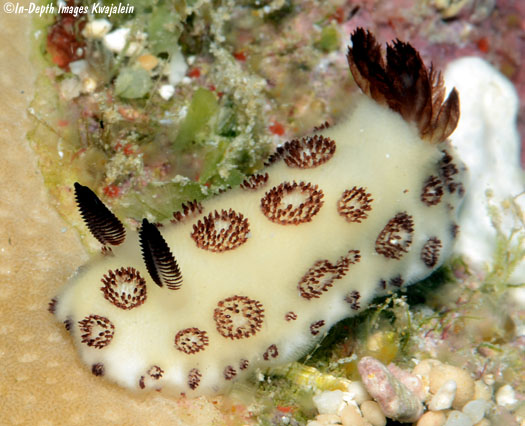
Created 13 December 2006
Updated 3 May 2021